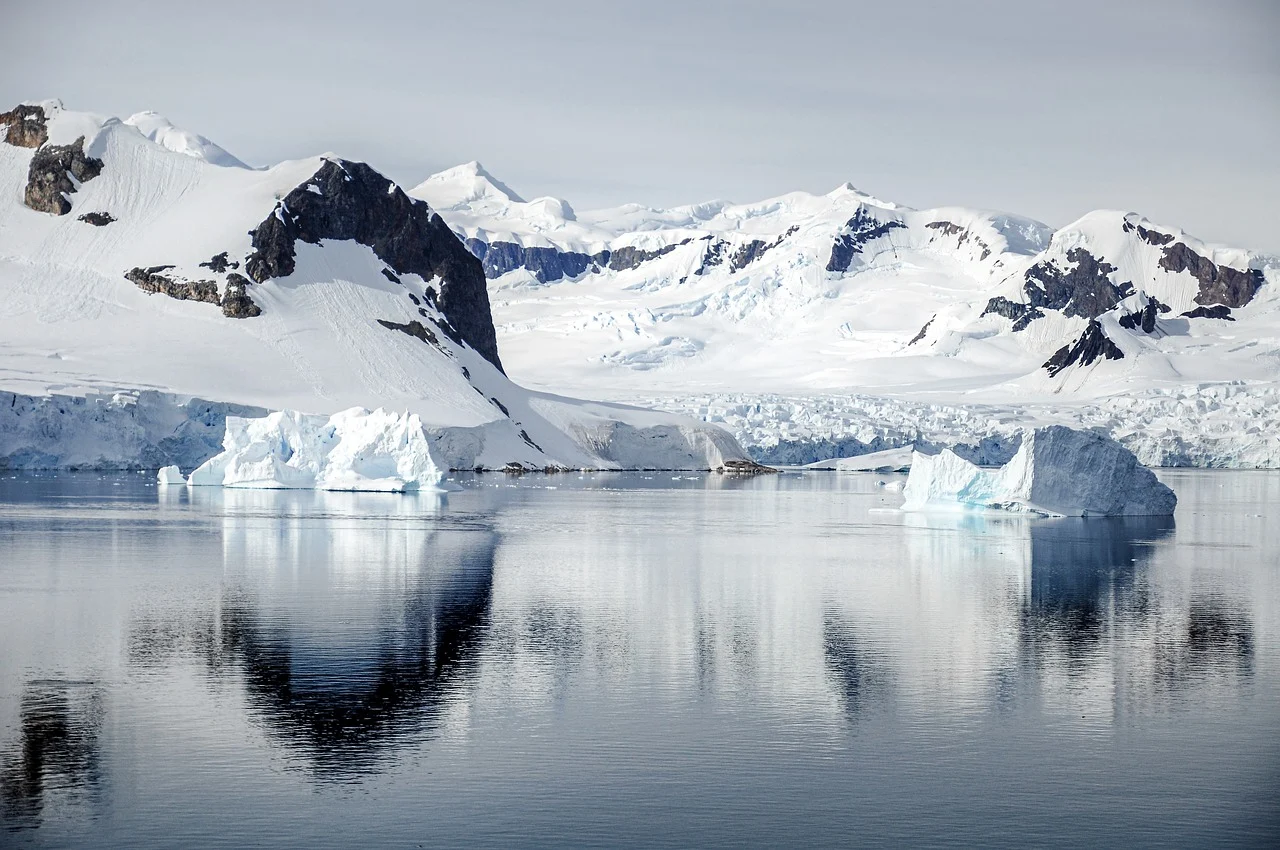Antarctica isn’t just ice and penguins—it’s a preserved snapshot of history wrapped in surreal beauty. This frozen frontier tells stories of early explorers, daring expeditions, and scientific breakthroughs. For travelers, it’s a chance to witness relics of human ambition set against breathtaking, untouched landscapes. In this guide, you’ll discover must-visit historical destinations and carefully curated itineraries to make every moment unforgettable.
The Heroic Age of Antarctic Exploration
The early 20th century marked one of the most awe-inspiring eras of exploration. Dubbed the “Heroic Age of Antarctic Exploration,” this period saw a daring pursuit of the world’s last frontier. Legendary explorers braved extreme cold, isolation, and limited technology to uncover Antarctica’s mysteries. Their achievements have left behind a trail of historic sites that now invite travelers to step back into a time of pure grit and determination.
Roald Amundsen’s Base Camp: Framheim
Set your sights on Framheim, the base camp used by Roald Amundsen during his groundbreaking South Pole expedition in 1911. Located in the Bay of Whales on the Ross Ice Shelf, this site was meticulously chosen for its strategic advantage. Amundsen’s focus on preparation and efficiency made this one of the most successful polar journeys in history. It was here that the dream of reaching the South Pole turned into reality.
While Framheim itself has succumbed to the unforgiving Antarctic environment, nearby landmarks like the Ross Ice Shelf remain must-see spots. If you’re keen to explore the area, guided icebreaker cruises often feature itineraries that incorporate locations significant to Amundsen’s historic journey. Keep an eye out for lectures and exhibits aboard these ships—they bring the story of his triumph alive in vivid detail.
Want an insider tip? Pack for extreme weather. Even in modern gear, the cold has a way of testing your limits here, much like it did for Amundsen and his crew.
Robert Falcon Scott’s Terra Nova Hut
Over on Ross Island, you’ll find Terra Nova Hut, the home base for Robert Falcon Scott’s ill-fated journey to the South Pole during 1910–1913. Named after the ship that carried his team, the hut stands as a haunting time capsule from the expedition. Inside, tools, food supplies, and personal belongings still sit where Scott and his crew left them, preserved by the continent’s bitter cold.
Today, Terra Nova Hut is an unforgettable stop for visitors heading to Ross Island, and its preservation offers a poignant glimpse into the human spirit’s resilience. Tours typically prioritize minimal environmental impact, and access is carefully regulated to maintain the hut’s historical integrity. It’s like stepping straight into a storybook of bravery and tragedy.
Pro tip? Brush up on Scott’s journals before visiting. His firsthand accounts will add emotional depth to what you’ll see, making the experience far more enriching.
Shackleton’s Endurance Expedition Sites
When you think of Antarctic survival stories, Sir Ernest Shackleton’s Endurance expedition is hard to beat. After their ship became trapped and eventually destroyed by crushing ice, Shackleton and his men faced a grueling two-year struggle to stay alive. This wasn’t just survival—it was legendary perseverance.
Elephant Island, where the crew waited for rescue, stands as a rugged monument to their endurance. Guided tours often offer scenic views of the island, and some operators even include Zodiac cruises for a closer look. For a more in-depth connection to Shackleton’s saga, South Georgia Island—where Shackleton finally secured help—is a must-visit. The island is home to his gravesite in Grytviken, a destination that feels both solemn and inspiring.
Insider advice? Take a moment to look out at the icy waters from Elephant Island. It’s humbling to imagine what Shackleton’s crew endured while battling the elements with little more than basic tools and sheer willpower.
Historic Huts of Cape Royds and Cape Evans
Cape Royds and Cape Evans on Ross Island are home to two of the most intact exploration-era huts. Ernest Shackleton’s Nimrod Expedition (1907–1909) used the Cape Royds hut, a relatively modest shelter brimming with century-old remnants, from crates of preserved food to handwritten notes. The Cape Evans hut, built during Robert Falcon Scott’s Terra Nova Expedition, is larger and better equipped, offering a more comprehensive look at how explorers prepared for life in the harsh Antarctic conditions.
Both huts seem frozen in time—chalk it up to sub-zero temperatures that have maintained everything from clothing to preserved penguin carcasses. If you’re taking a guided trip, these huts are often featured alongside educational talks about early Antarctic exploration. Trust us, the eerie stillness inside these shelters will transport you back to a time when survival relied on ingenuity and courage.
Quick tip: The Ross Sea itself is teeming with seals, whales, and penguins, so don’t put your camera away after visiting the huts. There’s plenty of wildlife to capture as you round out your historical tour.
Antarctica may feel far removed from everyday life, but these historic sites bridge the gap between past and present. They remind us of the feats early explorers achieved and offer a chance to walk in their footsteps. Travelers with a sense of history and adventure will find this journey nothing short of exhilarating.
Top Sites for Wildlife and Natural Beauty
Antarctica’s beauty is raw, untouched, and full of stories if you know where to look. While its history often takes center stage, the continent offers breathtaking scenery and unparalleled wildlife experiences. From volcanic islands to serene channels, these destinations seamlessly blend nature, history, and adventure.
Deception Island
Have you ever heard of a place where fire and ice coexist? That’s Deception Island. This volcanic island, with its horseshoe shape, is not your typical Antarctic spot. Its volcanic history is fascinating—dating back to eruptions that shaped its unique, natural harbor known as Port Foster. Today, you can still see geothermal activity, with warm sands along certain beaches steaming gently in the icy air.
Adding a layer of intrigue, Deception Island was once a hub for whaling in the early 1900s. Rusting oil drums, old machinery, and skeletal remains of whaling stations dot the landscape, offering a haunting reminder of a bygone industry. This abandoned history contrasts sharply with the vibrant wildlife found here. Think chinstrap penguin colonies by the thousands and seals lazing along the black volcanic sand.
For visitors, this striking mix of history and biodiversity makes Deception Island a must-see. Don’t forget your camera—you might even catch a glimpse of whales cruising the waters just offshore.
South Georgia Island
South Georgia Island stands out as one of the most important wildlife havens on Earth. Known by many as the Serengeti of the Southern Ocean, it’s a dream destination for nature lovers. Picture beaches teeming with king penguins, fur seals, and elephant seals. Above you? Skies filled with albatross and petrels. The biodiversity here feels almost endless.
But South Georgia is more than just a wildlife paradise—it carries deep historical weight. Famously connected to Sir Ernest Shackleton’s Endurance expedition, the island was where the legendary explorer found rescue after his harrowing journey across the Antarctic seas. Pay your respects at Shackleton’s gravesite in Grytviken, a historic whaling station that now serves as a small museum and burial ground.
A trip to South Georgia isn’t just a gateway to incredible wildlife. It’s a step into the pages of exploration history. Every wave-washed rock and glacier holds stories of survival and discovery.
Lemaire Channel
If Antarctica had a runway model, it would be the Lemaire Channel. Known as “Kodak Gap” for its unbelievably photogenic scenery, this narrow passage between towering, ice-draped cliffs is a visual masterpiece. On one side, rugged rock formations slice into the clouds. On the other, drifting icebergs float in mirror-like waters, creating a picture-perfect landscape.
Beyond its beauty, Lemaire Channel also played an essential role for early explorers. It served as a key route, guiding ships through its calm waters while providing shelter from the harsher seas nearby. Today, it’s a premier highlight on most Antarctic cruises, with every turn uncovering another jaw-dropping vista.
Keep your eyes peeled while you navigate the Lemaire Channel. Minke whales and orcas frequently visit, making it one of the most exciting places for wildlife spotting. If you thought Antarctica was just about scenery, the Channel proves it’s a dynamic mix of nature and adventure.
Port Lockroy
Port Lockroy is like stepping into a time capsule with a stamp and a postcard. Once a British research base during World War II, this historic station has been lovingly preserved and transformed into a museum and the southernmost post office in the world. Yes, you can send a postcard from Antarctica, complete with a unique polar stamp.
The original buildings, weathered by decades of Antarctic extremes, store artifacts and photographs that offer insight into the life of early researchers stationed here. Imagine the challenges they faced in the isolated, harsh conditions, relying on radio communication and months-long supply chains.
And then there’s the wildlife. A thriving Gentoo penguin colony surrounds Port Lockroy, so you’ll share your visit with hundreds of waddling locals. They’ve grown so accustomed to people that you’ll often see them curiously shuffling between the museum and visiting tourists.
Quick tip? Visit the gift shop. It directly funds the station’s upkeep and wildlife preservation efforts, making it a meaningful pit stop on your Antarctic journey.
Antarctica’s natural beauty and historic significance converge in these spots, offering unforgettable experiences. Whether you’re drawn to the haunting history of abandoned whaling stations or the serene silence of channels and fjords, one thing’s for sure: Antarctica’s allure lies in its ability to surprise, inspire, and connect you to something bigger than yourself.
Antarctica Travel Itineraries by Country
Planning a trip to Antarctica often begins with figuring out the best route from your home country. While the icy continent may feel worlds away, all journeys to Antarctica have clear starting points. These itineraries vary depending on where you’re traveling from, offering plenty of options to match your needs. Here’s how travelers from different parts of the world typically make their way to this one-of-a-kind destination.
Traveling from the United States
If you’re starting your Antarctic adventure in the United States, odds are your journey will route through South America. Most travelers begin in Ushuaia, a small port city in Argentina often called the “Gateway to Antarctica.” Direct flights from major US cities like Miami, New York, and Dallas connect to Buenos Aires, and from there, it’s a short hop to Ushuaia. Once there, you’ll board your cruise and set sail for the adventure of a lifetime.
Prefer to skip days at sea? Some itineraries now include flight-cruise combinations. For instance, you can fly directly to King George Island in the South Shetlands from Punta Arenas, Chile. This option saves time and is ideal for travelers looking to maximize their days on the continent rather than crossing the notoriously rough Drake Passage.
Popular options for U.S.-based travelers include:
- Traditional cruise itineraries: Sailing from Ushuaia to the Antarctic Peninsula (about a 10-day round trip).
- Fly-Cruise itineraries: Fly from Chile and board a small expedition ship closer to Antarctica for anywhere from 6 to 12 days.
With flexible options for all kinds of itineraries, planning your trip from the U.S. has never been more seamless.
Traveling from Australia and New Zealand
Australians and New Zealanders have historic routes to Antarctica, rooted in some of the most groundbreaking expeditions in polar exploration. The first explorer-based missions, like those of Sir Douglas Mawson, launched from Hobart, Tasmania, and this tradition continues today. Cruises to East Antarctica often leave from Hobart, with itineraries that focus on less-visited areas like the Mawson Coast and Commonwealth Bay.
From New Zealand, many expeditions begin in Christchurch, another hub of Antarctic exploration. These routes tend to focus on the Ross Sea area, home to historic sites like Shackleton’s Hut and Scott’s Terra Nova Hut, both on Ross Island. You’ll experience a mix of untouched remote scenery and deep historical significance.
Routes from Oceania are ideal for:
- Travelers wanting the less-frequented eastern side of Antarctica.
- Those eager to trace the paths of famed Australasian polar explorers.
- History buffs seeking unique expedition-style itineraries.
Keep in mind, trips departing from Hobart or Christchurch are longer—typically lasting about 20–35 days, due to the greater distances involved. But these trips allow you to explore where most Antarctic tourists never venture.
Traveling from the United Kingdom and Europe
Travelers from the U.K. and Europe also tend to reach Antarctica via South America, thanks to major international connections to hubs like Buenos Aires and Santiago. From these cities, it’s easy to transition to Antarctic cruise departures, particularly out of Ushuaia.
European travelers often treat the journey to Antarctica as part of a longer South American adventure. Want to combine your Antarctic visit with tango lessons in Buenos Aires or a trek in Patagonia? Many pre-and post-cruise options allow you to do just that.
For a more tailored experience, Antarctic-bound flights from Punta Arenas, Chile, have become increasingly popular. Fly-and-cruise itineraries provide a faster route for those looking to minimize transit time. These options are particularly appealing for European travelers with limited vacation days.
Popular itineraries among Europeans often include:
- Cruises through the Antarctic Peninsula with added excursions to Elephant Island or Deception Island.
- Fly-cruise itineraries for quick access to the continent.
With versatile routes and plenty of South American connections, Antarctic travel has never been more accessible for those starting from Europe.
Traveling from South America
For South American travelers, Antarctica practically starts in their backyard. Two key departure points—Ushuaia, Argentina and Punta Arenas, Chile—serve as the primary gateways. These cities connect travelers to the Drake Passage, the narrow stretch of ocean between South America and Antarctica.
Ushuaia, with the most extensive range of Antarctic cruises, is the clear frontrunner for departures. The city is packed with ships ready to make the journey across the Drake and offers itineraries ranging from 10 to 30 days. These trips typically focus on the Antarctic Peninsula, known for its stunning landscapes, glacial icebergs, and vibrant wildlife colonies.
Punta Arenas, on the other hand, has become a hotspot for flight-cruise options, flying travelers directly to King George Island. This modern approach cuts out two days of open-water crossing and appeals to those who might not fare well on long sea voyages.
Why is South America the most common departure hub for Antarctica?
- It’s closer than any other continent! The journey from Patagonia to the Antarctic Peninsula is the shortest you’ll find.
- A huge selection of cruise operators make Ushuaia one of the world’s busiest Antarctic travel ports.
- Chile’s flight connections offer newer, faster access to Antarctic adventure.
South America isn’t just for those from nearby countries—it’s the launchpad for the majority of travelers worldwide heading to this icy wonderland.
Whether you’re starting from North America, Europe, Oceania, or South America, heading to Antarctica is about smart planning and picking the right itinerary. Each route offers something unique, letting you choose just how you want to experience the world’s southernmost continent.
Practical Travel Tips for Antarctica
Traveling to Antarctica isn’t your ordinary getaway—it’s an adventure into one of the planet’s harshest, yet most beautiful, environments. Preparation is the key to ensuring a safe, comfortable, and unforgettable experience. From timing your visit to packing the right gear, here’s what you need to know before heading to the bottom of the world.
Best Time to Visit
Antarctica doesn’t have traditional tourist seasons, but its austral summer (from November to March) is when almost all travel occurs. These months bring milder temperatures, longer daylight hours, and the best opportunities to explore.
- November to early December: This is when the ice starts to break up, and the landscape looks pristine and untouched. Early-season visitors can see epic ice formations, freshly blanketed in snow. Penguins are nesting at this time, offering spectacular photo ops.
- Mid-December to February: The peak of summer brings slightly warmer weather (averaging 20 to 50°F) and the highest wildlife activity. June chicks are hatching, seals are basking, and whales are arriving in the waters off Antarctica’s shores.
- Late February to March: This is when the season winds down. However, it’s prime time for whale watching as humpbacks and orcas feed in abundance before their migration.
Timing your trip depends on what you most want to experience—whether it’s pristine ice, overflowing penguin rookeries, or breaching whales. Keep in mind that earlier trips may have colder conditions but fewer crowds, while peak and late-season will have more ships but also more diverse wildlife to see.
Packing Essentials
Packing for Antarctica is all about balance—you want to stay warm, dry, and comfortable without overloading your suitcase. The right clothing and equipment will make or break your trip.
Clothing Must-Haves:
- Base layers: Opt for moisture-wicking thermal underwear to keep warm without sweating. Merino wool or synthetic materials are ideal.
- Mid-layers: Fleece or insulated jackets for added warmth.
- Outer layers: A waterproof and windproof jacket (GORE-TEX or similar) is a must for withstanding freezing winds and constant spray.
- Trousers: Waterproof overtrousers are essential for excursions.
- Accessories:
- Thick, insulated gloves (and a backup pair).
- Thermal socks—pack extras in case they get wet.
- A warm hat that covers your ears.
- Neck gaiter or balaclava to shield your face.
- Footwear: Insulated, waterproof boots are necessary for zodiac landings and walking on snow. Most tour operators provide them, but check beforehand.
Gear and Extras:
- Dry bags: Keep cameras, electronics, and important items safe from water. Zodiac trips can get very wet.
- Polarized sunglasses: Protect your eyes from intense glare off ice and snow.
- Sunscreen and lip balm: Yes, even in Antarctica. The sun reflects harshly off ice.
- Binoculars: For spotting wildlife from a distance.
- Medication: Seasickness tablets are non-negotiable for Drake Passage crossings.
A pro tip? Pack light but smart. The Antarctic weather can change in minutes, so layered clothing lets you adjust fast. And don’t forget—you’ll be wearing bulky gear most of the time, so your suitcase doesn’t need to hold much “fancy wear.”
Choosing the Right Tour Operator
Not all tours to Antarctica are created equal. Selecting the right operator can significantly impact your trip’s safety, enjoyment, and environmental footprint.
Here’s what to look for:
- IAATO Membership: Choose operators that are part of the International Association of Antarctica Tour Operators (IAATO). They follow strict regulations to minimize environmental impacts and protect the continent’s fragile ecosystem.
- Small Ship Advantage: Smaller vessels (under 500 passengers) let you land more frequently and intimately explore. Ships carrying over 500 passengers generally do not allow landings, limiting your experience.
- Experience and Reputation: Research reviews and track records. Do the guides have expertise in Antarctic wildlife and history? What safety protocols are in place for harsh weather conditions?
- Eco-Conscious Practices: Sustainability shouldn’t just be a buzzword. Look for companies using clean energy protocols and waste management systems. Top-tier operators actively contribute to conservation efforts.
Top-rated operators such as Quark Expeditions, Hurtigruten, or Aurora Expeditions are excellent places to start your search. And read the fine print—make sure you understand what’s included in the package (gear rental, porter assistance, etc.) and what’s not.
Physical and Mental Preparation
Let’s face it: Antarctica isn’t easy on the body—or the mind. Preparing yourself physically and mentally can make a world of difference for this once-in-a-lifetime trip.
Physical Preparation:
- Exercise a few months before: Build up your stamina. You’ll often face uneven, icy terrain and long hikes on shore.
- Learn to layer clothing properly: Know how to adjust between hot, humid ship cabins and freezing outdoor environments.
- Check your health issues: Have a thorough check-up and make sure you bring necessary medications. Your travel insurance must cover evacuation, as the remote location means minimal healthcare access.
- Seasickness: Prepare for rough waters in the Drake Passage. Carry effective medication and practice breathing techniques to help during crossings.
Mental Preparation:
The isolation and cold can mess with psychology, even on a short trip. Prepare decision fatigue (everything from what gear to wear to feeling overwhelmed by endless beauty).
- Manage expectations: Yes, rough days happen. The weather, the schedule, or a long journey from home can take a toll.
Antarctica is an unparalleled blend of raw beauty and gripping history. From iconic exploration sites to mesmerizing natural wonders, it offers a journey that’s as educational as it is awe-inspiring. Every visit tells a story—a tapestry of human resilience and nature’s unspoiled majesty.
Thoughtful planning transforms this once-distant dream into an achievable reality. Whether you’re tracing the footsteps of legendary explorers or marveling at towering glaciers, every detail matters. Research your routes, pack wisely, and align with expert operators to ensure every moment counts.
Antarctica isn’t just a destination—it’s an experience you’ll carry long after you leave its icy shores. Curious to make it your next adventure? The journey starts with you.

Hey there! I’m Danille from Beautiful Over Sixty, and I’m so glad you’re here! Got a moment? Let’s jump into some styling magic. Forget the skim and stay for the sparkle. If you’re all about classy and timeless looks, you’re in for a treat. Love what you see? We’ve got loads more where that came from. Visit our site to refresh your look with tips that keep you polished and chic. It’s a treasure trove you’ll want to explore! https://beautifuloversixty.com/
Discover more from Beautiful over 40ish
Subscribe to get the latest posts sent to your email.




